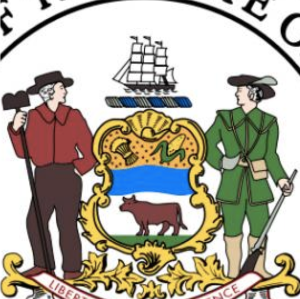
| |

The object of said Society shall be the collection and preservation of... Indian curiosities and other matters...
calculated to illustrate and perpetuate the history and settlement of said Territory.
An Act to incorporate the Historical Society of Minnesota, October 30,1849
Founded by 9 US Treaty Signers, with others |
The histories of Indigenous people are often isolated in public discourse from the "mainstream" history of the United States. Treaty signers link these parallel narratives. In the story of most major US historical events - the Revolution, the Battle of Fallen TImbers, the Civil War, the Aaron Burr conspiracy, the California Gold Rush - clusters of treaty signers appeared in important roles. In the famous Dred Scott case, for instance, two treaty signers were owners of Dred Scott; another leased his labor; another owned Dred Scott's wife, Harriet; another was the attourney of a Dred Scott owner. In the murder trial of Palemon Winchester, as another example, the victim, defendant, and prosecutor were treaty signers; another owned the house where the murder took place; and yet another posted bail for the defendant. But the connections among US treaty signers run deeper than their presence at singular events. Treaty signers were connected to one another through business partnerships, family ties, and often surprising social networks. They forged voluntary associations that included fraternal organizations, missionary efforts, military orders, and membership in cultural institutions. Through these networks, treaty signers secured social positions, forged business partnerships, and promoted their own cultural perspectives. Some of these networks also served to further the financial and political interests of their members. |

Detail: Great Seal of the State of Delaware
(Designed by the Society of Cincinnati) |
Society of the Cincinnati
During the American Revolution, officers in the Continental Army were paid with the promise of land. As the Revolution ended, half of the officers joined the Society of the Cincinnati, a fraternal organization that would promote their interests. Society members pushed Congress to acquire Indigenous land and award it to members of the military. This society was America's first "special interest group." Members also helped write the Northwest Ordinance that organized the Territory North of the Ohio River. When the Ordinance passed, Society members controlled the territorial government, including treaty making and land sales, and owned millions of acres of land. | The Society of Cincinnat: Conspiracy and Distrust in Early America (Markus Hunemorder, Berghahn Books, 2006) is a book length treatment of an important association of treaty signers. Find it here.
|
US Treaty Signers who were members of the Society of the Cincinnati:
|
Aztec Club
At the end of the US War with Mexico in 1847, US army officers commandeered a mansion in Mexico City to use as a social club, in a conscious imitation of the Society of the Cincinnati. Many of these officers had signed treaties during their participation in Indian removal in the 1830s; others would go on to sign treaties during and after the Civil War. No less than five members of the Aztec Club became candidates for US president on the tickets of major political parties. |
US Treaty Signers who were members
of the Aztec Club: |
Freemasonry
Scores of treaty signers were members of Masonic lodges from Virginia to Washington state. The remarkable thing about their engagement in Freemasonry, however, is the control they they exerted over the organization. When significant white communies were established on Indian land, treaty signers often created the first local Masonic lodges. When a state was admitted to the Union, all of the lodges in that state were organized into a Grand Lodge; treaty signers were among the incorporaters and Masters of Grand Lodges in Alabama, Texas, Wisconsin, Illinois, Minnesota, Florida, Maine, Missouri, Montana, Michigan, Kentucky, Ohio, New York, Mississippi, Oregon, and Indiana. |
Incorporators and Grandmasters of
statewide Masonic Grand Lodges: |
|
